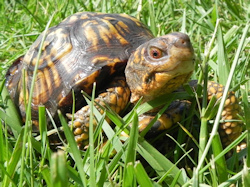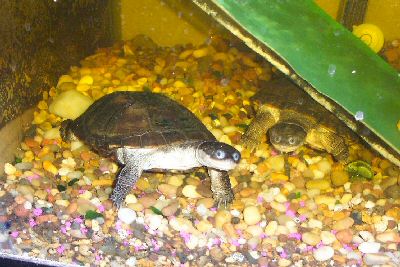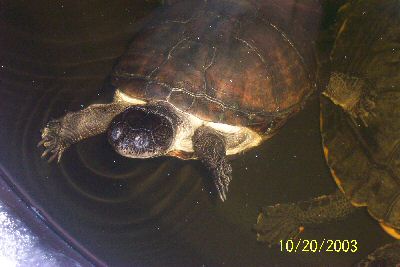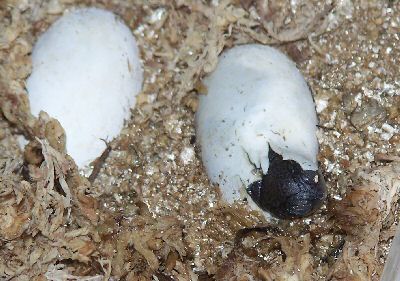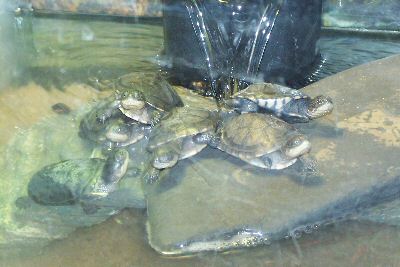|
AFRICAN SIDENECK TURTLES |
|---|
| Pelomedusa and Pelusios, otherwise known as
African Side neck turtles have been quite popular in pet stores for some
time. They are a fairly hardy species and don't grow quite so large and
can be maintained in an aquarium. There are quite a few sub-species of
each. They are also called the African mud turtle or the African
helmeted turtle. They have a face that appears to have a permanent smile
on it with a sort of goofy look about it. Pelusios have a hinged
plastron, Pelomedusa do not. They do best with a more shallow environment with a sand base and even better if they can be provided with an area to come out and bask that has a sandy area that they can dig into. Being mud turtles they love to dig in. When outside I sometimes find they will dig in pretty deep, several inches. Water is best kept between nine and eighteen inches depending on size/age of your turtles. The hatchlings I keep in approximately 9" of water which includes a 2" sand base. They are given both a cave to go under which they can also sit upon and a floating turtle dock to bask on. They are avid baskers. The adults can be given deeper water but MUST be given easy access to their basking area. If you keep males and females together you need to watch that the males are not aggressive as they can drown the females if they cannot get out of the water easily. Water temperature should always be cooler than the basking area. 72-75° is a good temperature with a nice hot basking area of 90-95°. Diet consists of freeze dried krill, shrimp (cooked or raw),smelts, superworms, earthworms, a good pellet food like Aqua Max, Turtle Brittle or Reptomin, crickets, and snails; and some water plants like anacharis or water lettuce will also be eaten as well as feeder fish like minnows. Any bugs fed should be gut loaded first. Breeding will likely take place if you have a male and female so be prepared to deal with eggs. Eggs can be incubated at about 84° on damp vermiculite with high (70%) humidity. Incubation can take approximately eight to ten weeks. Once the hatchlings pip move the egg to a container with just damp paper towels and once the yolk sac is absorbed they can be moved to an aquarium set up.
Click on the picture to view full size
|
All material herein © '2004-2018 "Turtle Rescue of Long Island ". All Rights Reserved
